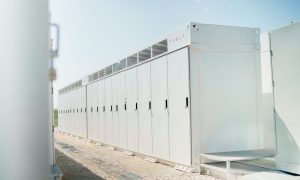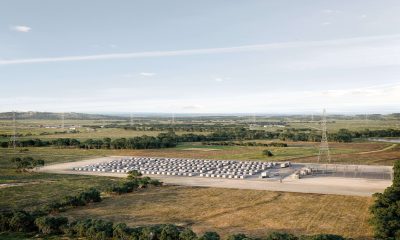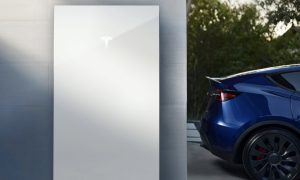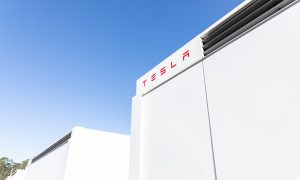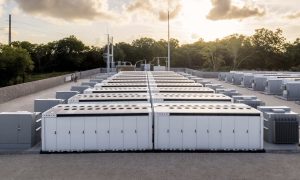Energy
A Tesla Powerwall-powered Home: Will it Pay Off?
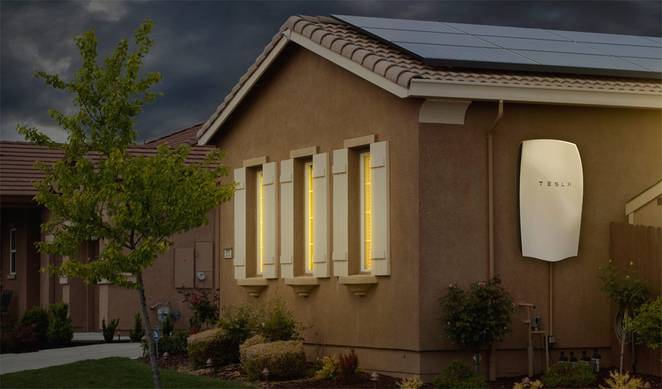
We’ve all heard by now that the Tesla Powerwall home battery is designed to store electricity, generated from solar panels and electricity captured from utility companies during off-peak rates, and provide overall independence from the grid.
It sounds like an amazing product, and I’m sure it is, but will it pay off to own one?
Understanding the Powerwall
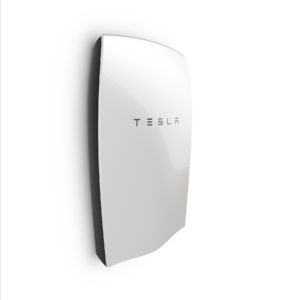 The Powerwall is an energy storage unit otherwise known as a battery. It comes in two sizes today (although they can be stacked/expanded), 7kWh and 10kWh (what’s a kWh?) and costs $3,000 and $3,500, respectively. Note that the cost excludes an inverter and installation, both of which can be quite expensive to the point it can double the total out-of-pocket cost. The specs for the Powerwall come in at a whopping 220 lbs / 100 kg (unclear as to which capacity this represents) and 52.1″ x 33.9″ x 7.1″ or roughly 3.5 x 3 feet in dimension.
The Powerwall is an energy storage unit otherwise known as a battery. It comes in two sizes today (although they can be stacked/expanded), 7kWh and 10kWh (what’s a kWh?) and costs $3,000 and $3,500, respectively. Note that the cost excludes an inverter and installation, both of which can be quite expensive to the point it can double the total out-of-pocket cost. The specs for the Powerwall come in at a whopping 220 lbs / 100 kg (unclear as to which capacity this represents) and 52.1″ x 33.9″ x 7.1″ or roughly 3.5 x 3 feet in dimension.
The concept is simple, the Powerwall battery stores energy generated through your utility company when rates are the lowest (or through solar panels) and ready on tap when you need it.
Installation
Tesla notes that the cost of the Powerwall does not include the inverter or installation. An inverter alone such as the one SolarCity uses can cost around $2,000 which does not include a separate installation cost.
Installation will vary depending on the following:
- Does your residence have an existing net metering?
- Is it already wired for a generator?
- What is the distance between the photovoltaic solar panel hardware and the location to where Tesla’s Powerwall would be mounted? The shorter the distance, the less cabling to run and thus a lower installation cost.
At 200+ pounds in weight, you’ll need to ensure that there’s ample space and structural support to where the Powerwall will be installed. There also needs to be sufficient cooling space and ventilation in the mounting location.
Primary Use Cases for the Tesla Powerwall
Tesla proposes two primary use cases for the Powerwall:
- Time of Use (TOU) offset
- Backup power
Let’s explore each of these options.
Powerwall provides a Time of Use offset
In many states and countries from around the world, a Time of Use (TOU) electricity rate is available through the local utility company. The concept is simple: you pay different rates at different times of the day. During peak hours the rates are higher than they are during off hours. Many Tesla owners that live in these areas that have TOU pricing will charge their cars during the evenings when rates are typically the lowest.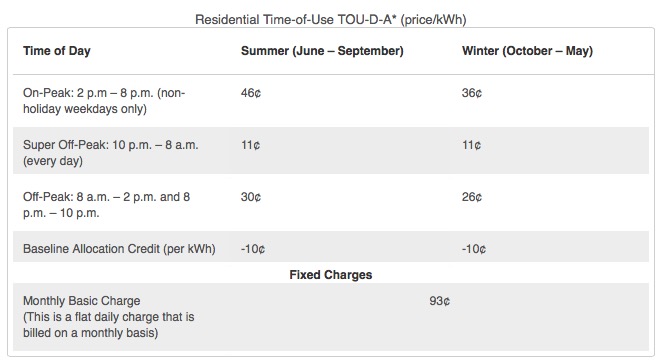
Unfortunately TOU pricing is not widespread here in Massachusetts but if you’re able to take advantage of it in your area, then the Powerwall may bring some value although it would take quite awhile to recoup the initial investment.
Taking a look at TOU rates from Southern California Edison, we can see that their off-peak rate is $0.11 while peak rate comes in at $0.46 for a difference of $0.35 per kWh. The large Powerwall unit is capable of storing 10kWh. Assuming you are able to fully charge the battery during off-peak hours each and every day, you would save approximately $3.50 per day.
Since the unit itself (without install) costs $3,500, it would take approximately 1000 days or just shy of 3 years before you “broke even”. This is assuming the utility company continues to offer off-peak rates throughout the year. Add in the installation costs and you’re looking at closer to 5 years before breaking even on the Tesla Powerwall investment
Of course, there’s the argument that having a solar panel system would allow you to charge the Powerwall battery for free through sunlight, but only if you fully ignore the cost of the solar system itself.
RELATED >>> My journey to installing a SolarCity system
Owning or leasing a solar system comes with its own break-even calculations so you’ll have to factor that into the equation with the Powerwall.
Powerwall provides backup power
The other stated potential use case for the Powerwall is to use it for backup power in the event your home power is completely cut off from the grid.
Don’t expect to power your entire house with just a single 10kWh Powerwall. Tesla’s site provides some good examples of how much power common home appliances draw. For instance the Powerwall would be able to power a typical refrigerator for 2 days. This time would of course be extended if you were able to replenish the battery through a solar system.
In the case of an extended power outage (think Zombie apocalypse), you may be able to power essential home services indefinitely with a properly sized battery and solar system.
The ability to re-fill from solar is a nice benefit, but the alternative would be a noisy gasoline powered generator.
 A 6.5kW generator can be had for for as little as $800. That generator can output 32,500kWh (50% load x 10 hours according that link). That’s 3x the power at less than 25% of the cost of Tesla’s offering. The cost for that power? About $15. The generator, unlike the Powerall, is mobile and can go anywhere you go. Generators typically have very low maintenance and can be re-filled quickly regardless of weather conditions (hurricanes, snow storms, etc – all likely conditions that will cause loss of power).
A 6.5kW generator can be had for for as little as $800. That generator can output 32,500kWh (50% load x 10 hours according that link). That’s 3x the power at less than 25% of the cost of Tesla’s offering. The cost for that power? About $15. The generator, unlike the Powerall, is mobile and can go anywhere you go. Generators typically have very low maintenance and can be re-filled quickly regardless of weather conditions (hurricanes, snow storms, etc – all likely conditions that will cause loss of power).
I have a Honda 6.5kW generator. My house has its own well, septic etc. When power goes out I fire up the generator and power the things I need. I have water, hot showers, heat (oil, fired by electric which is powered by the generator), lights etc. I have run for days off that generator in some of the worst weather conditions New England can throw at me. I’d argue if you’re serious about backup power, then a generator is still the best option.
Powerwall, as a backup power option and also from a pure cost-perspective, I feel is only a good fit for those who have a solar system installed and live in an area where the climate is more stable.
Elon Musk
Tesla Energy shines with substantial YoY growth in deployments
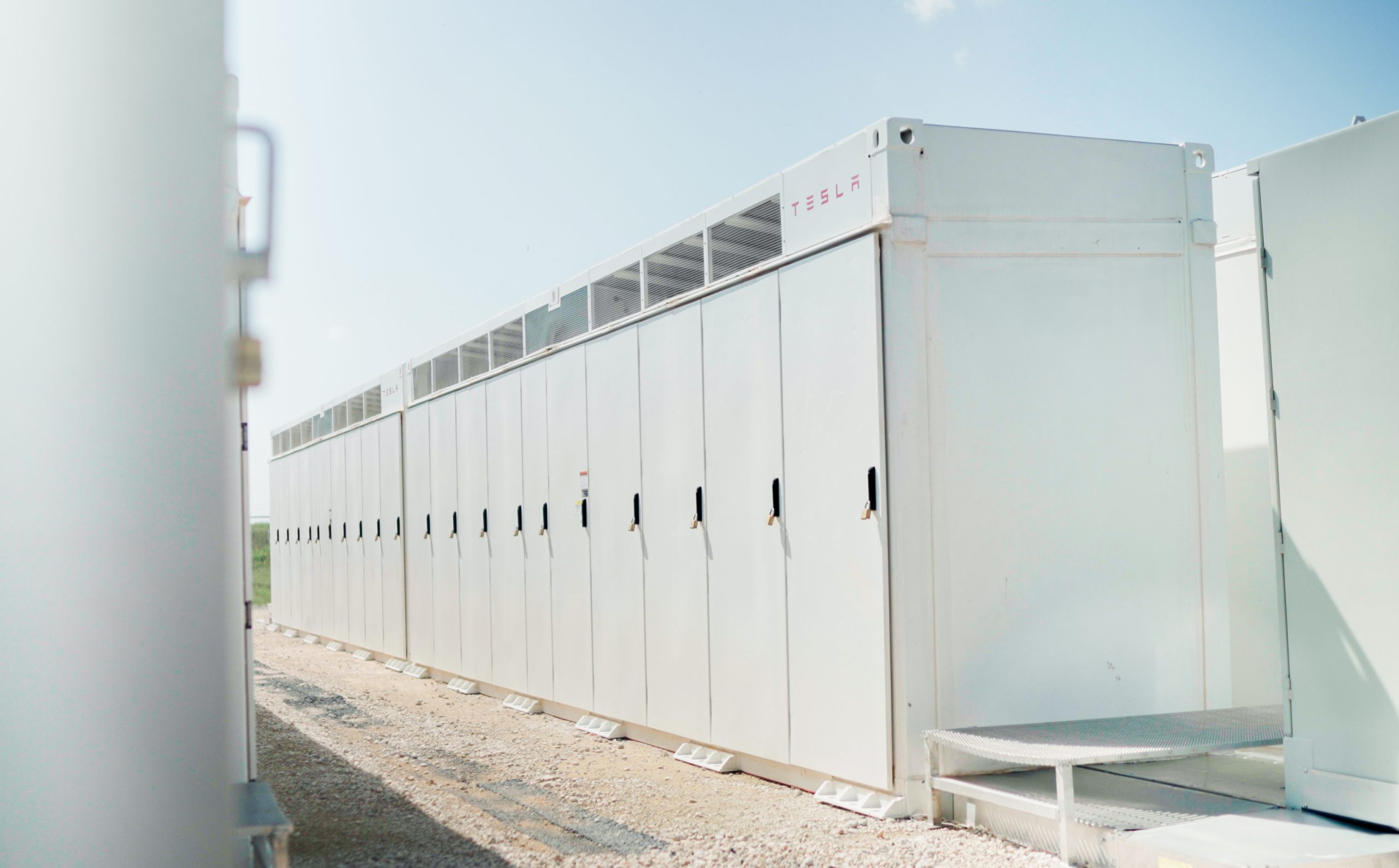
Tesla Energy shined in what was a weak delivery report for the first quarter, as the company’s frequently-forgotten battery storage products performed extraordinarily well.
Tesla reported its Q1 production, delivery, and deployment figures for the first quarter of the year, and while many were less-than-excited about the automotive side, the Energy division performed well with 10.4 GWh of energy storage products deployed during the first quarter.
This was a 156 percent increase year-over-year and the company’s second-best quarter in terms of energy deployments to date. Only Q4 2024 was better, as 11 GWh was recorded.
Tesla Energy is frequently forgotten and not talked about enough. The company has continued to deploy massive energy storage projects across the globe, and as it recorded 31.5 GWh of deployments last year, 2025 is already looking as if it will be a record-setting year if it continues at this pace.
Tesla Megapacks to back one of Europe’s largest energy storage sites
Although Energy performed well, many investors are privy to that of the automotive division’s performance, which is where some concern lies. Tesla had a weak quarter for deliveries, missing Wall Street estimates by a considerable margin.
There are two very likely reasons as to why this happened: the first is Tesla’s switchover to the new Model Y at its production facilities across the globe. Tesla said it lost “several weeks” of production due to the updating of manufacturing lines as it rolled out a new version of its all-electric crossover.
Secondly, Tesla could be facing some pressure from pushback against the brand, which is what many analysts will say. Despite the publicity of attacks on Tesla drivers and their vehicles, as well as the company’s showrooms, it would be safe to assume that we will have a better picture painted of what the issue is in Q2 after the company reports numbers in July.
If Tesla is still struggling with lackluster delivery figures in Q2 after the Model Y is ramped and deliveries are more predictable and consistent, we could see where the argument for brand damage is legitimate. However, we are more prone to believe the Model Y, which accounts for most of Tesla’s sales, and its production ramp is likely the cause for what happened in Q1.
In what was a relatively bleak quarter, Tesla Energy still shines as the bright spot for the quarter.
Energy
Tesla lands in Texas for latest Megapack production facility
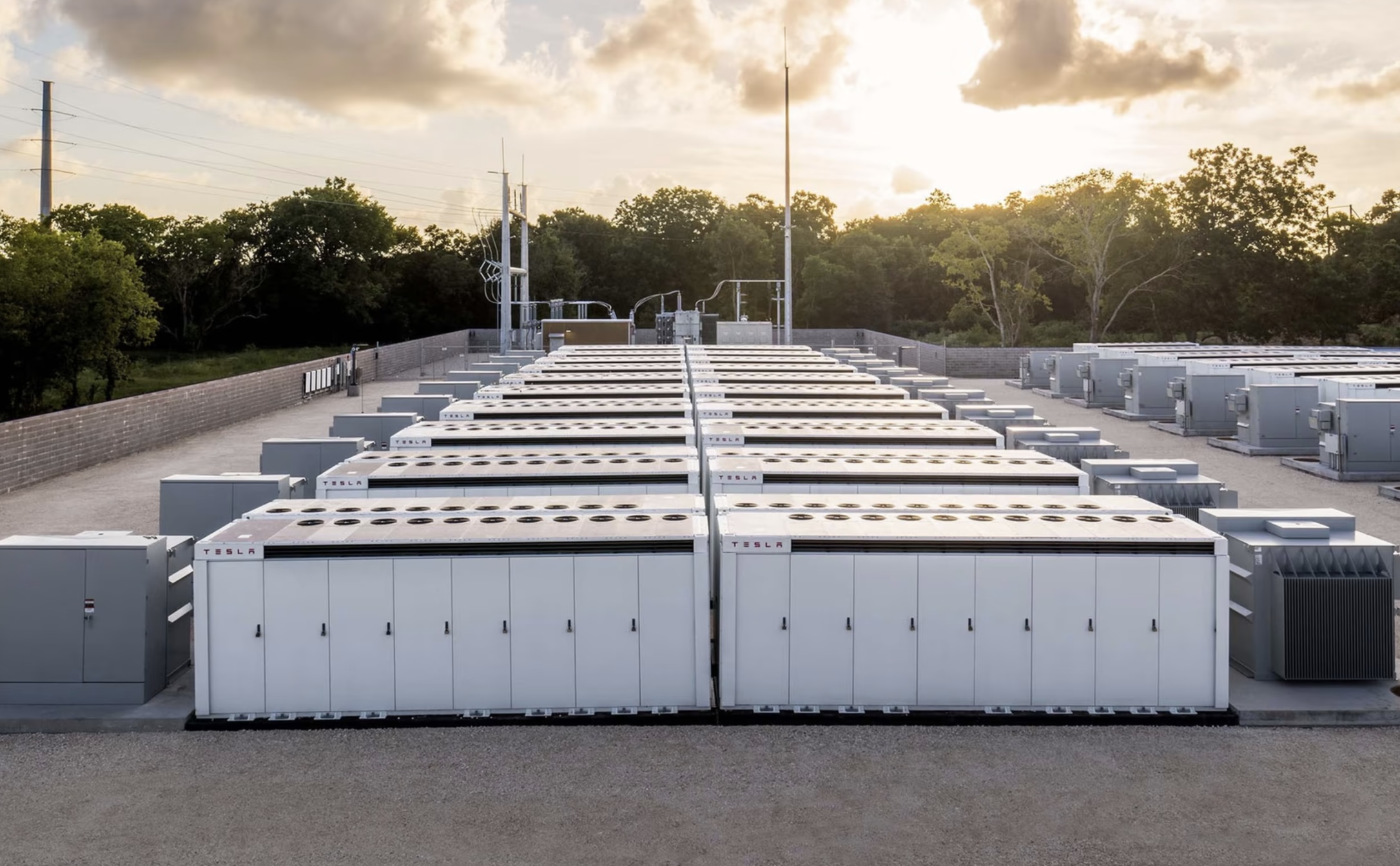
Tesla has chosen the location of its latest manufacturing project, a facility that will churn out the Megapack, a large-scale energy storage system for solar energy projects. It has chosen Waller County, Texas, as the location of the new plant, according to a Commissioners Court meeting that occurred on Wednesday, March 5.
Around midday, members of the Waller County Commissioners Court approved a tax abatement agreement that will bring Tesla to its area, along with an estimated 1,500 jobs. The plant will be located at the Empire West Industrial Park in the Brookshire part of town.
Brookshire also plans to consider a tax abatement for Tesla at its meeting next Thursday.
The project will see a one million square-foot building make way for Tesla to build Megapack battery storage units, according to Covering Katy News, which first reported on the company’s intention to build a plant for its energy product.
CEO Elon Musk confirmed on the company’s Q4 2024 Earnings Call in late January that it had officially started building its third Megapack plant, but did not disclose any location:
“So, we have our second factory, which is in Shanghai, that’s starting operation, and we’re building a third factory. So, we’re trying to ramp output of the stationary battery storage as quickly as possible.”
Tesla plans third Megafactory after breaking energy records in 2024
The Megapack has been a high-demand item as more energy storage projects have started developing. Across the globe, regions are looking for ways to avert the loss of power in the event of a natural disaster or simple power outage.
This is where Megapack comes in, as it stores energy and keeps the lights on when the main grid is unable to provide electricity.
Vince Yokom of the Waller County Economic Development Partnership, commented on Tesla’s planned Megapack facility:
“I want to thank Tesla for investing in Waller County and Brookshire. This will be a state-of-the-art manufacturing facility for their Megapack product. It is a powerful battery unit that provides energy storage and support to help stabilize the grid and prevent outages.”
Tesla has had a lease on the building where it will manufacture the Megapacks since October 2021. However, it was occupied by a third-party logistics company that handled the company’s car parts.
Energy
Tesla Energy had a blockbuster 2024

Tesla Energy has become the undisputed dark horse of the electric vehicle maker. This was highlighted by Tesla Energy’s growing role in the company’s overall operations in the past quarters.
And as per Tesla’s year-end milestone posts on X, Tesla Energy had a blockbuster 2024.
Tesla Energy’s 2024 milestones:
- As per Tesla on its official social media account on X, the company has hit over 800,000 Powerwalls installed worldwide.
- From this number, over 100,000 Powerwall batteries have been enrolled in virtual power plant (VPP) programs.
- The Powerwall 3 has officially been launched in the United States, Canada, Puerto Rico, the U.K., Germany, Italy, Australia, and New Zealand.
- The Tesla Megapack hit over 22 GWh in operation across more than 60 countries across the globe.
- The Lathrop Megafactory, which produces the Megapack, has been ramped to 40 GWh per year.
- The Lathrop Megafactory has also produced its 10,000th Megapack battery.
- The Shanghai Megafactory was completed in just seven months, and it is ready to start Megapack production in Q1 2025.
Hit 800k Powerwalls installed worldwide
— Tesla (@Tesla) December 31, 2024
Also:
– Over 100k Powerwalls are now enrolled in VPP programs
– Launched Powerwall 3 in the US, Canada, Puerto Rico, UK, Germany, Italy, Australia & New Zealand
– Megapack hit 22+ GWh in operation across 60+ countries
– Ramped… pic.twitter.com/bE88DpeyTg
Powerwall owners’ 2024 impact:
- As per Tesla Energy, Powerwall owners generated a total of 4.5 TWh of solar energy globally in 2024. This was equivalent to powering a Model 3 for more than 17 billion miles.
- A total of 1.1 TWh of energy was stored in Powerwalls in 2024. This protected homes from over 5.8 million outages during the year.
- Tesla’s Storm Watch feature for Powerwall batteries covered 2.8 million severe weather events over the year.
- Powerwall owners saw collective savings of over $800 million on utility bills.
- Virtual Power Plants contributed over 2.2 GWh of power to the grid. This reduced the need for 2,200 metric tons of fossil fuel peaker plant emissions.
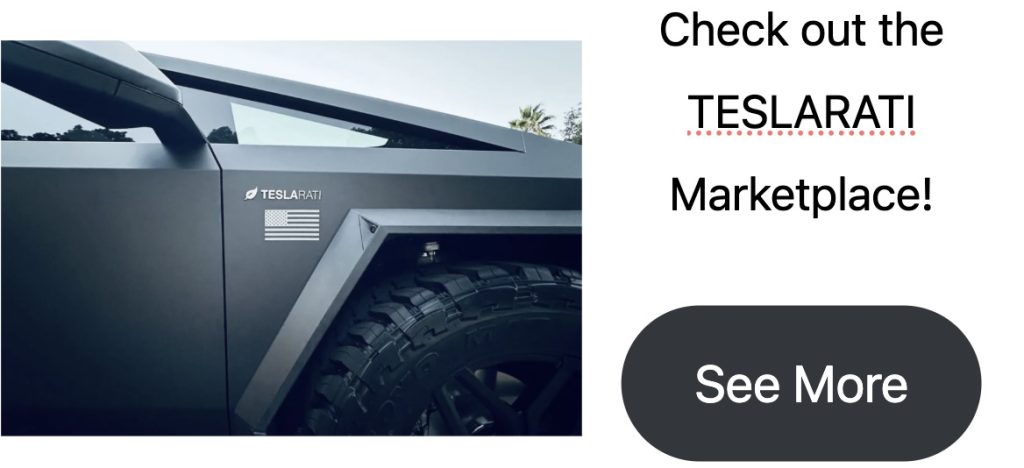

Don’t hesitate to contact us with news tips. Just send a message to simon@teslarati.com to give us a heads up.
-

 News4 days ago
News4 days agoTesla’s Hollywood Diner is finally getting close to opening
-

 Elon Musk7 days ago
Elon Musk7 days agoTesla doubles down on Robotaxi launch date, putting a big bet on its timeline
-
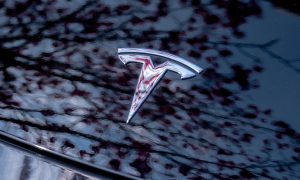
 News1 week ago
News1 week agoTesla’s top investor questions ahead of the Q1 2025 earnings call
-
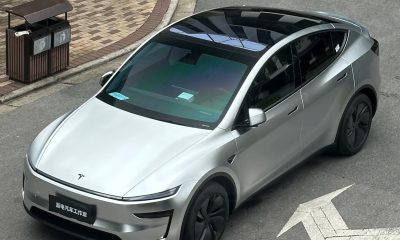
 Investor's Corner2 weeks ago
Investor's Corner2 weeks agoTesla bull sees company’s future clearly: Cathie Wood
-

 Cybertruck2 weeks ago
Cybertruck2 weeks agoTesla confirms Cybertruck will make its way out of North America this year
-

 News2 weeks ago
News2 weeks agoBell Canada takes aim at potential Starlink subsidies
-

 News2 weeks ago
News2 weeks agoTesla launches cheapest and longest range Cybertruck trim yet
-

 Investor's Corner2 weeks ago
Investor's Corner2 weeks agoTesla average transaction prices (ATP) rise in March 2025: Cox Automotive


